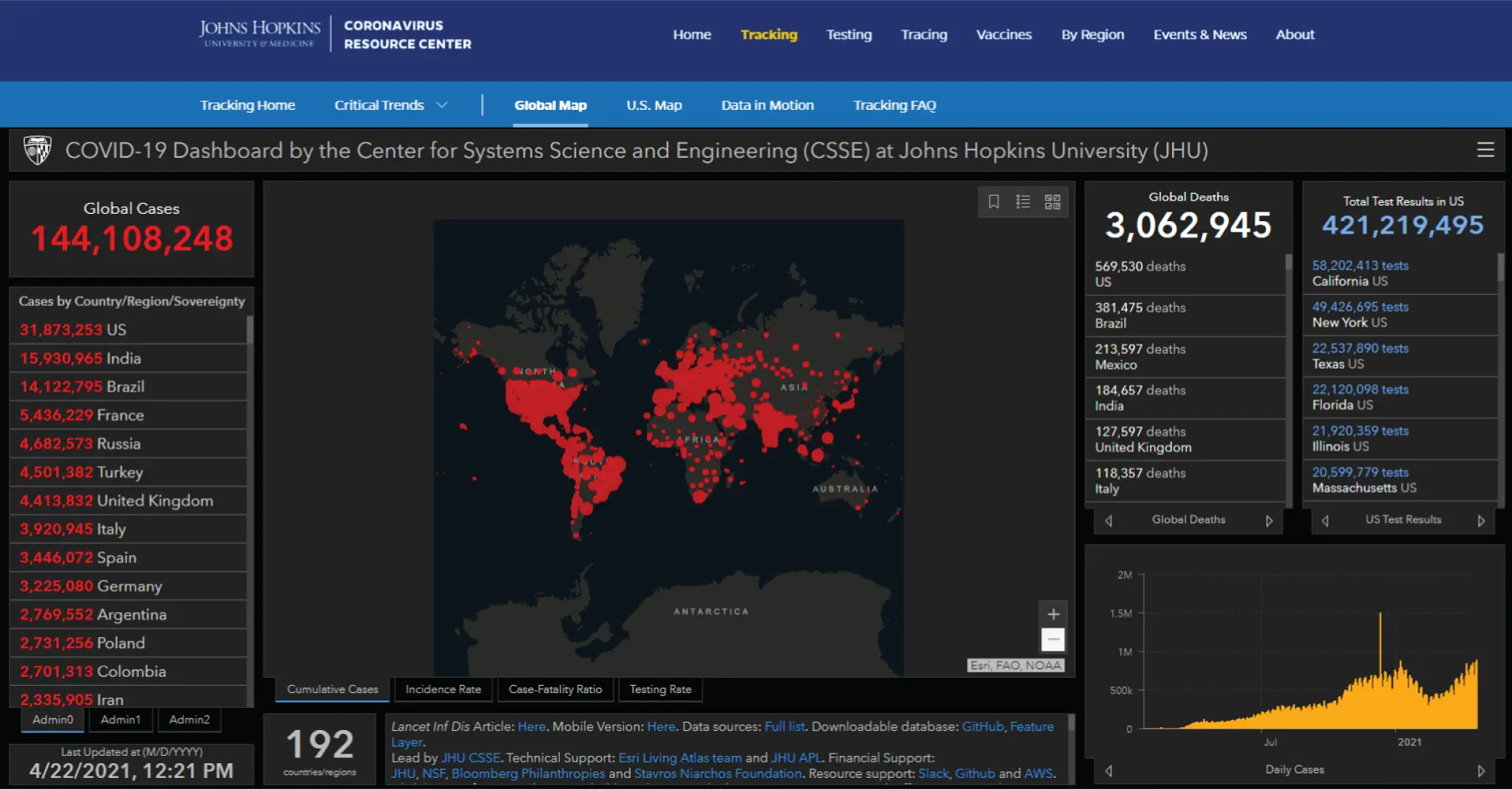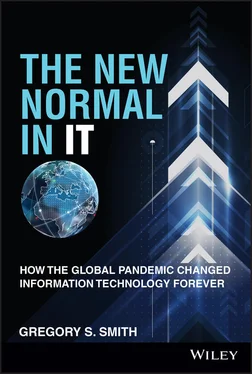Gregory S. Smith - The New Normal in IT
Здесь есть возможность читать онлайн «Gregory S. Smith - The New Normal in IT» — ознакомительный отрывок электронной книги совершенно бесплатно, а после прочтения отрывка купить полную версию. В некоторых случаях можно слушать аудио, скачать через торрент в формате fb2 и присутствует краткое содержание. Жанр: unrecognised, на английском языке. Описание произведения, (предисловие) а так же отзывы посетителей доступны на портале библиотеки ЛибКат.
- Название:The New Normal in IT
- Автор:
- Жанр:
- Год:неизвестен
- ISBN:нет данных
- Рейтинг книги:5 / 5. Голосов: 1
-
Избранное:Добавить в избранное
- Отзывы:
-
Ваша оценка:
- 100
- 1
- 2
- 3
- 4
- 5
The New Normal in IT: краткое содержание, описание и аннотация
Предлагаем к чтению аннотацию, описание, краткое содержание или предисловие (зависит от того, что написал сам автор книги «The New Normal in IT»). Если вы не нашли необходимую информацию о книге — напишите в комментариях, мы постараемся отыскать её.
The New Normal in IT: How the Global Pandemic Changed Information Technology Forever,
The New Normal in IT
The New Normal in IT — читать онлайн ознакомительный отрывок
Ниже представлен текст книги, разбитый по страницам. Система сохранения места последней прочитанной страницы, позволяет с удобством читать онлайн бесплатно книгу «The New Normal in IT», без необходимости каждый раз заново искать на чём Вы остановились. Поставьте закладку, и сможете в любой момент перейти на страницу, на которой закончили чтение.
Интервал:
Закладка:
Mr. Smith has spoken at a number of prestigious conferences across the globe including keynote presentations in Canada, Denmark, India, Indonesia, Turkey, China, Singapore, and Belgium. He also keynoted the famous Interop conference in both New York and Las Vegas. As a practicing CIO and academic professor, he keeps his pulse on today's changing IT landscape and continues to apply those trends to business practice.
CHAPTER 1 Lasting Business Impacts and Resource Sourcing After a Global Pandemic
Occurrences can be unpredictable. If we have to endure a cascade of rumpling coincidences, it's fate that dictates our lives, taking over the common procedure of “timing,” and, thus, sealing the bondage of our free choice. Once our choice is kidnapped and strangled to the core, fate checkmates our destiny .
—ERIK PEVERNAGIE1
Introduction
As I start writing this text, there have been 144,108,248 Covid-19 cases globally with 31,873,253 in the United States and 3,062,945 deaths globally and 569,530 in the United States, respectively (see Exhibit 1.1). 2 I am relatively sure, as many public health professionals have discussed in the past several months, that there are far more cases and deaths globally as a result of various factors including improper counting, deaths occurring outside of hospitals, fatalities due to untreated fatal diseases such as cancer going undertreated during the height of the pandemic, and suicides. The global pandemic of 2020–2021 will go down in history as the most devastating impact on human life in our generation. The pandemic will have lasting effects on trade, commerce, travel, human behavior in business operations, and how employees work around the globe going forward.
Combine the likelihood that a fair percentage of the United States and global population will not opt to receive a Covid-19 vaccine with likely future variants that develop that make current vaccines less effective, this pandemic is long from over . CNN recently reported that 40 percent of U.S. Marines have opted to not receive the Covid-19 vaccine. 3 The pharmaceutical maker Pfizer, which makes one of the Covid-19 vaccines, recently announced that for people to stay protected, they will likely need another dose within 12 months of their first pair of doses. 4

Exhibit 1.1 The Johns Hopkins University of Medicine Coronavirus Resource Center
Source: The Johns Hopkins University of Medicine Coronavirus Resource Center.
From a historical perspective, smallpox remains the only human disease to be globally eradicated after killing 300 million people alone in the twentieth century. 5 It took 184 years from the first-ever vaccine in 1796 to its eradication in 1980. 6 Polio was almost previously eradicated except in Pakistan and Afghanistan until Covid-19 hit globally, which set back progress in 2020. 7 However, cases are now on the rise and expected to climb even further in the coming months. 8 “So far this year officials have tallied more than 200 cases of wild polio and nearly 600 cases of the vaccine-derived form of the disease.” 9 Most of the vaccine-derived strains of polio are in Afghanistan and Pakistan, but now these rogue strains of polio are also turning up across much of sub-Saharan Africa, Yemen, Malaysia, and the Philippines. 10
The combination of individuals opting out of the initial vaccine and those who don't take or have access to recurring booster shots with likely variants of the virus make for a longer-term cyclical Covid-19 transmissible virus. Combine this with the anticipated return of the annual flu virus in the fall and we have all the makings for cyclical resurgence and fear. Thus, the world will be dealing with a Covid-strained virus for years to come and, simply put, businesses, organizations, and universities need to adjust their operating environments including technology strategy to properly adapt and prepare for waves of reoccurrences. From a technology perspective, that includes more cloud-based solutions accessible via mobile devices. The traditional desktop computer will die a slow death as a result of Covid-19 as more organizations' employees leverage all mobile solutions including laptops, tablets, and smartphones.
India experienced a really bad second wave of Covid-19 in April 2021. According to CNN.com, “healthcare and other essential services across India are close to collapse as a second coronavirus wave that started in mid-March tears through the country.” 11 The article goes on to report that hospitals are running out of oxygen, beds are running low, and testing is nearly impossible to get. 12
Impacts from Covid-19 on Businesses and Organizations
According to the consulting company McKinsey & Company, it could take various sectors more than five years to recover to 2019 level contributions to GDP. 13 Specifically, the worst projected sectors globally that have the longest recovery period (up to 2025 and beyond) include arts; entertainment; recreation; hotels and food services; educational services; transportation and warehousing; manufacturing; and mining, oil, and gas extraction. 14 McKinsey goes on to suggest that economic impacts across the globe could take one of three paths:
1 A quick recovery during which lower fatalities occur in younger people and working adults.
2 A global slowdown that assumes most countries are not able to control the spread of the virus, especially in heavily populated areas, affecting small- to medium-sized companies more acutely.
3 A pandemic and recession arise, assuming that the virus is not seasonal. 15
During the early peak of the pandemic in 2020, there were 20,500,000 people who lost their jobs in the United States alone (14.7 percent) between February and April. 16 The 10 most impacted sectors of the United States job markets included the following areas:
1 Hotels lost 42.7 percent of jobs.
2 Sports and performing arts lost 45.4 percent of jobs.
3 Furniture and home furnishing stores lost 46.3 percent of jobs.
4 Restaurants and bars lost 48.1 percent of jobs.
5 Motion picture and sound recording lost 48.3 percent of jobs.
6 Dentist offices lost 53.3 percent of jobs.
7 Laundry and professional services (pet, parking, dating, etc.) lost 53.5 percent of jobs.
8 Clothing and accessory stores lost 58.9 percent of jobs.
9 Amusement parks and casinos lost 59.9 percent of jobs.
10 Scenic transportation lost 62.1 percent of jobs. 17
Impacts in Academia
In academia, K–12 and higher education included, both had significant impacts as a result of Covid-19 during the 2020 academic year. According to the University of Southern California Dornsife Center for Economic and Social Research (CESR), “only about two-thirds of households with income less than $25,000/year had computers and Internet access for children's remote learning, compared to 91 percent of families with household incomes of $75,000–$149,000.” 18 In addition, “students receiving critical services, like free or reduced-priced meals” and other education services dropped dramatically once schools started closing their doors by April 2020. 19 By October 2020, approximately 68 percent of K–12 children in the United States were either learning fully or partially remote. 20 In addition, nearly 40 percent of parents indicated that their children needed tutoring and indicated that their schools were not providing those services. 21 Parents were also polled with regard to the overall quality of their children's education during 2020. Parents of remote learners graded it as “less engaging, and of lower quality across all content areas.” 22 Parents of in-classroom learning or hybrid in-class/remote learning indicated no change or a small decrease of concerns compared to fully remote learning. 23 Unions representing K–12 teachers across the country fought to have teachers return to in-classroom instruction. Parents looking for alternatives sought private-school education where they offered in-person learning.
Читать дальшеИнтервал:
Закладка:
Похожие книги на «The New Normal in IT»
Представляем Вашему вниманию похожие книги на «The New Normal in IT» списком для выбора. Мы отобрали схожую по названию и смыслу литературу в надежде предоставить читателям больше вариантов отыскать новые, интересные, ещё непрочитанные произведения.
Обсуждение, отзывы о книге «The New Normal in IT» и просто собственные мнения читателей. Оставьте ваши комментарии, напишите, что Вы думаете о произведении, его смысле или главных героях. Укажите что конкретно понравилось, а что нет, и почему Вы так считаете.












